Demonstration of the Capability of 1U CubeSat for Measurement of the Energy Spectrum on LEO
Abstract
:1. Introduction
2. Materials and Methods
2.1. Lucky-7 Satellite
2.2. Data Processing
- Interpolation of the missing position and time data by the algorithm described in [21].
- Extrapolation of the position and time to the middle of the observation time.
- Transformation of the position from ECEF to LLH coordinates.
- Synchronization of the position and time with the radiation sensor measurement.
- Visualization of the data using GEO toolbox.
3. Results and Discussion
4. Conclusions
Author Contributions
Funding
Data Availability Statement
Conflicts of Interest
References
- Cubesat Design Specification Rev. 14. 2022. Available online: https://static1.squarespace.com/static/5418c831e4b0fa4ecac1bacd/t/62193b7fc9e72e0053f00910/1645820809779/CDS+REV14_1+2022-02-09.pdf (accessed on 10 October 2022).
- Yang, F.; Yue, H.; Wang, G.; Tu, Q.; Wang, W. The Design and Analysis of Picosatellite Deployer with Controllable Release Function; IEEE: Macao, China, 2017; pp. 548–554. [Google Scholar]
- Qiao, L.; Glennon, E.; Dempster, A.G.; Chaoui, S. Using cubesats as platforms for remote sensing with satellite navigation signals. In Proceedings of the 2013 IEEE International Geoscience and Remote Sensing Symposium—IGARSS, Melbourne, Australia, 21–26 July 2013. [Google Scholar]
- Akyildiz, I.F.; Jornet, J.M.; Nie, S. A new CubeSat design with reconfigurable multi-band radios for dynamic spectrum satellite communication networks. Ad Hoc Netw. 2019, 86, 166–178. [Google Scholar] [CrossRef]
- Rose, T.S.; Rowen, D.W.; LaLumondiere, S.; Werner, N.I.; Linares, R.; Faler, A.; Wicker, J.; Coffman, C.M.; Maul, G.A.; Chien, D.H.; et al. Optical communications downlink from a 1.5U Cubesat: OCSD program. In Proceedings of the International Conference on Space Optics—ICSO 2018, Chania, Greece, 9–12 October 2018; Karafolas, N., Sodnik, Z., Cugny, B., Eds.; SPIE: Bellingham, WA, USA, 2019. [Google Scholar]
- Zhang, X.; Zhang, J.; Wu, S.; Cheng, Q.; Zhu, R. Aircraft monitoring by the fusion of satellite and ground ADS-B data. Acta Astronaut. 2018, 143, 398–405. [Google Scholar] [CrossRef]
- Shao, T.Y.; Kao, S.L.; Su, C.M. Taiwan AIS CubeSat Tracking System for Marine Safety. In Proceedings of the 2019 International Conference on Intelligent Computing and its Emerging Applications (ICEA), Tainan, Taiwan, 30 August–1 September 2019. [Google Scholar]
- Akyildiz, I.F.; Kak, A. The Internet of Space Things/CubeSats: A ubiquitous cyber-physical system for the connected world. Comput. Netw. 2019, 150, 134–149. [Google Scholar] [CrossRef]
- Lemmer, K. Propulsion for CubeSats. Acta Astronaut. 2017, 134, 231–243. [Google Scholar] [CrossRef]
- Gormley, D.J.; Stock, A.A. A Spectrum Sensor for CubeSat Radios. In Proceedings of the 2021 IEEE Cognitive Communications for Aerospace Applications Workshop (CCAAW), San Antonio, TX, USA, 3–7 October 2021. [Google Scholar]
- Van Allen, J.A.; Ludwig, G.H.; Ray, E.C.; McIlwain, C.E. Observation of high intensity radiation by satellites 1958 alpha and gamma. Jet Propuls. 1958, 28, 588–592. [Google Scholar] [CrossRef]
- Mertens, C.J.; Slaba, T.C.; Hu, S. Active Dosimeter-Based Estimate of Astronaut Acute Radiation Risk for Real-Time Solar Energetic Particle Events. Space Weather 2018, 16, 1291–1316. [Google Scholar] [CrossRef]
- Kauppila, J.S.; Kay, W.H.; Haeffner, T.D.; Rauch, D.L.; Assis, T.R.; Mahatme, N.N.; Gaspard, N.J.; Bhuva, B.L.; Alles, M.L.; Holman, W.T.; et al. Single-Event Upset Characterization Across Temperature and Supply Voltage for a 20-nm Bulk Planar CMOS Technology. IEEE Trans. Nucl. Sci. 2015, 62, 2613–2619. [Google Scholar] [CrossRef]
- Shaneyfelt, M.R.; Schwank, J.R.; Dodd, P.E.; Hill, T.A.; Dalton, S.M.; Swanson, S.E. Effects of Moisture on Radiation-Induced Degradation in CMOS SOI Transistors. IEEE Trans. Nucl. Sci. 2010, 57, 1777–1780. [Google Scholar] [CrossRef]
- Gieseler, J.; Oleynik, P.; Hietala, H.; Vainio, R.; Hedman, H.P.; Peltonen, J.; Punkkinen, A.; Punkkinen, R.; Säntti, T.; Hæggström, E.; et al. Radiation monitor RADMON aboard Aalto-1 CubeSat: First results. Adv. Space Res. 2020, 66, 52–65. [Google Scholar] [CrossRef] [Green Version]
- Peltonen, J.; Hedman, H.P.; Ilmanen, A.; Lindroos, M.; Maattanen, M.; Pesonen, J.; Punkkinen, R.; Punkkinen, A.; Vainio, R.; Valtonen, E.; et al. Electronics for the RADMON instrument on the Aalto-1 student satellite. In Proceedings of the 10th European Workshop on Microelectronics Education (EWME), Tallinn, Estonia, 14–16 May 2014. [Google Scholar]
- Kákona, M.; Šlegl, J.; Kyselová, D.; Sommer, M.; Kákona, J.; Lužová, M.; Štěpán, V.; Ploc, O.; Kodaira, S.; Chroust, J.; et al. AIRDOS—open-source PIN diode airborne dosimeter. J. Instrum. 2021, 16, T03006. [Google Scholar] [CrossRef]
- Arneodo, F.; Giovanni, A.D.; Marpu, P. A Review of Requirements for Gamma Radiation Detection in Space Using CubeSats. Appl. Sci. 2021, 11, 2659. [Google Scholar] [CrossRef]
- Kovar, P. Experiences with the GPS in Unstabilized CubeSat. Int. J. Aerosp. Eng. 2020, 2020, 8894984. [Google Scholar] [CrossRef]
- Kovar, P.; Sommer, M.; Matthiae, D.; Reitz, G. Measurement of cosmic radiation in LEO by 1U CubeSat. Radiat. Meas. 2020, 139, 106471. [Google Scholar] [CrossRef]
- Kovář, P.; Sommer, M. CubeSat Observation of the Radiation Field of the South Atlantic Anomaly. Remote. Sens. 2021, 13, 1274. [Google Scholar] [CrossRef]
- Laifr, J.; Kovar, P. High altitude balloon test flight of miniature low power dosimeter for small satellites. Slabop. Obz. 2018, 74, 2018. [Google Scholar]
- Kovář, P. Start Acceleration of the Space GPS Receiver. Int. J. Electron. Telecommun. 2020, 55, 4. [Google Scholar]
- Sigfox Connected Objects: Radio Specifications. Technical Report, SigFox. 2022. Available online: https://build.sigfox.com/sigfox-device-radio-specifications (accessed on 10 October 2022).
- Baudin, M. Programming in Scilab. scilab.org. 2011. Available online: https://forge.scilab.org/index.php/p/docprogscilab/downloads/get/progscilab-v.0.10_en.pdf (accessed on 10 October 2022).

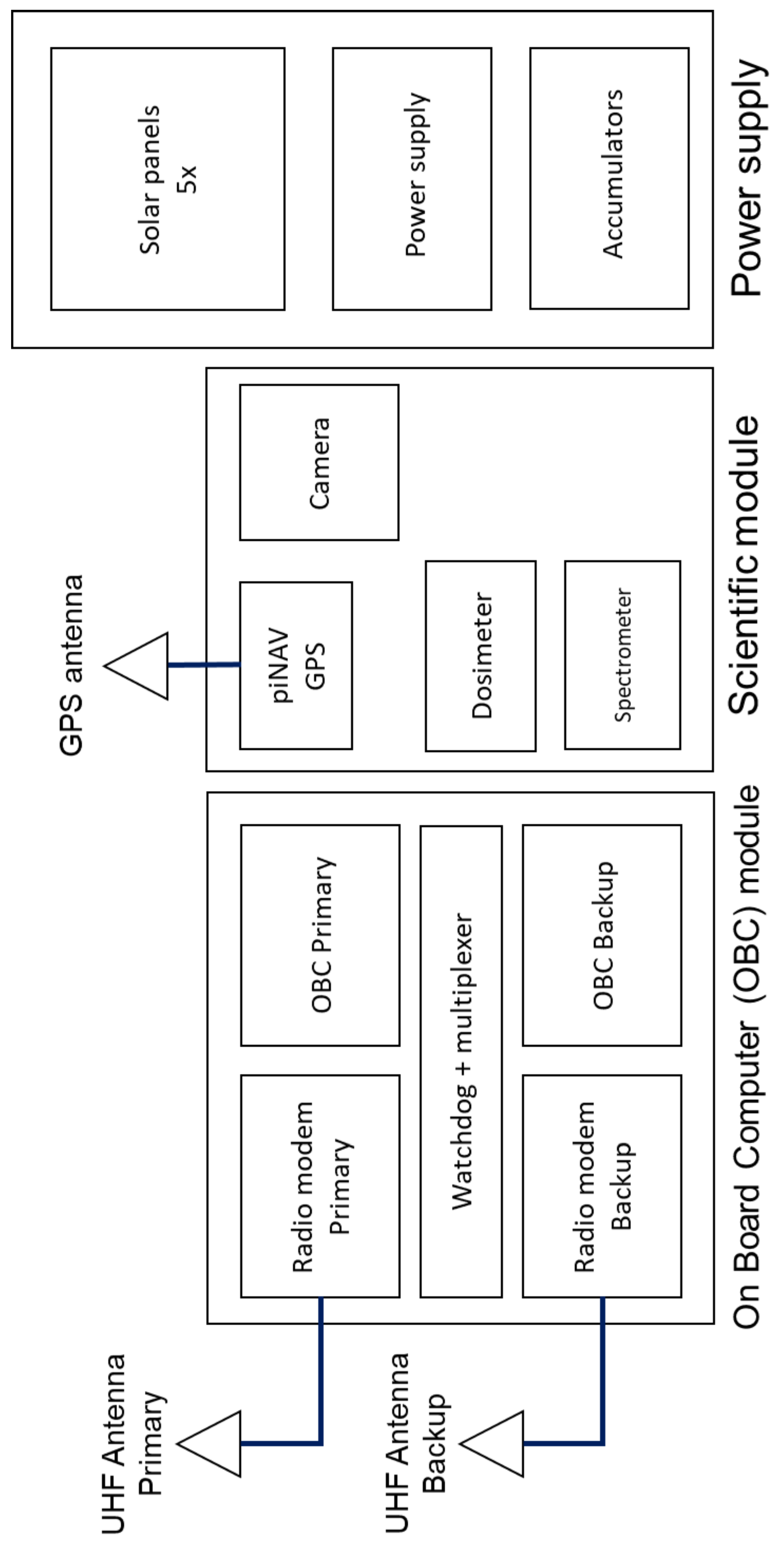

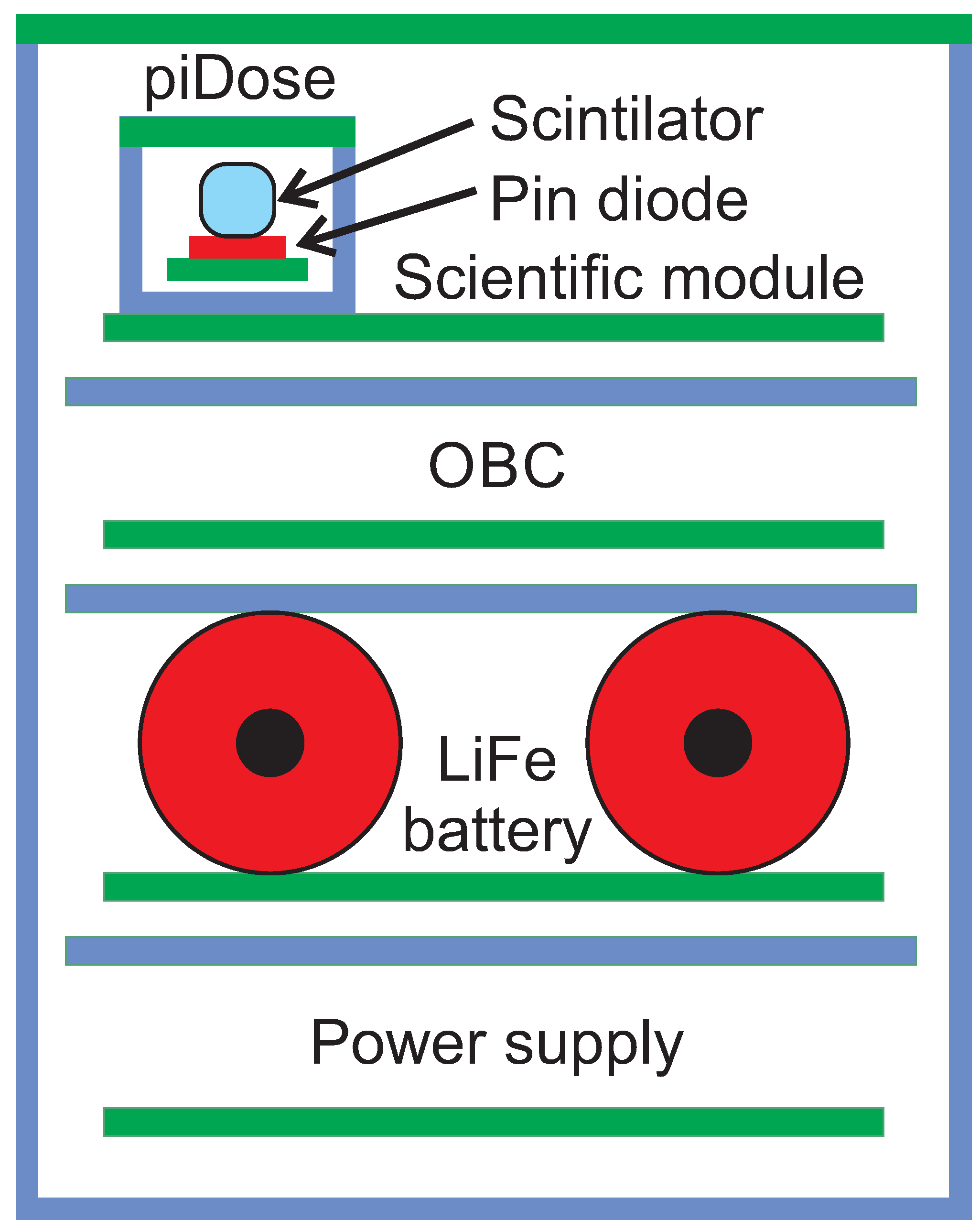

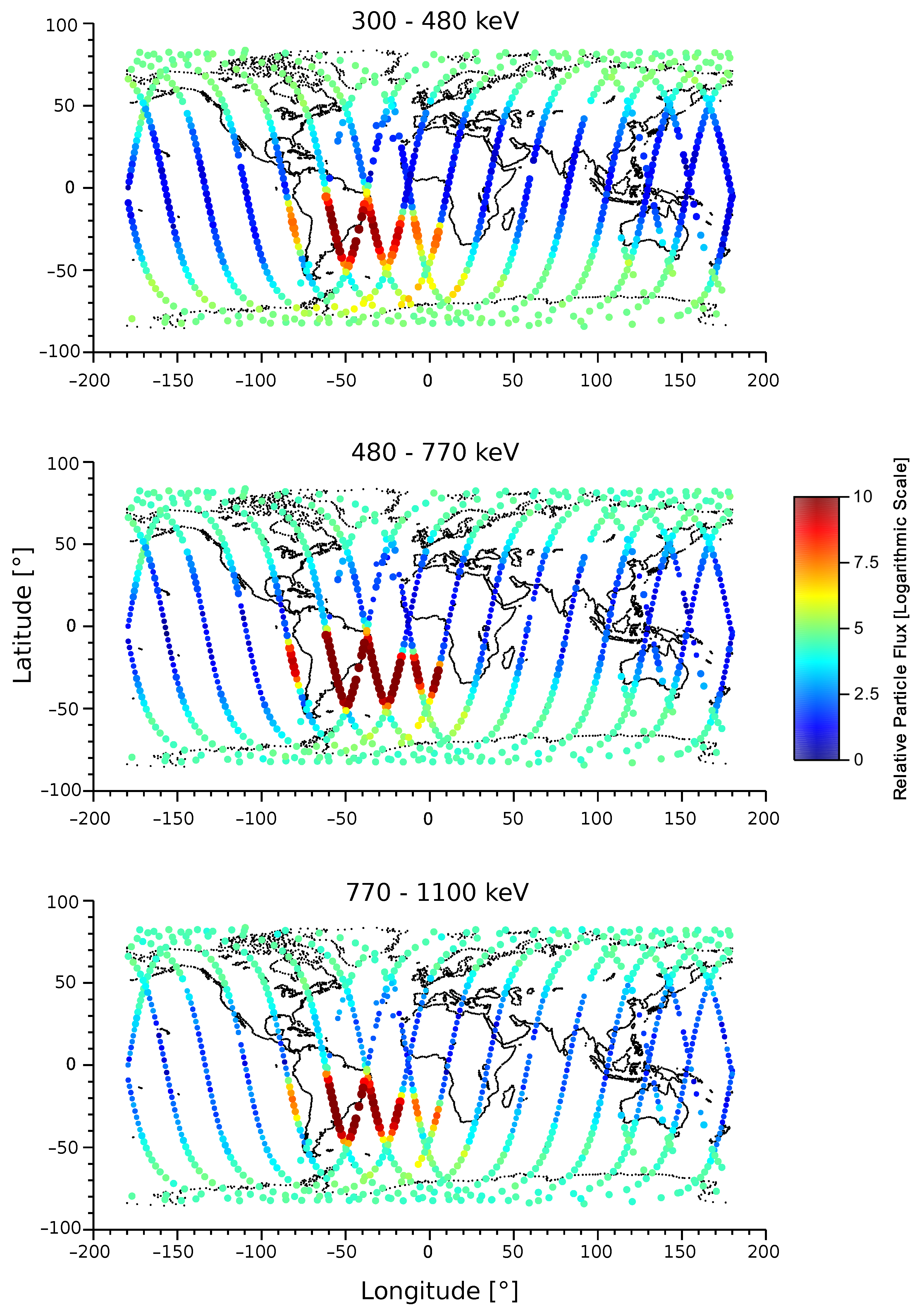
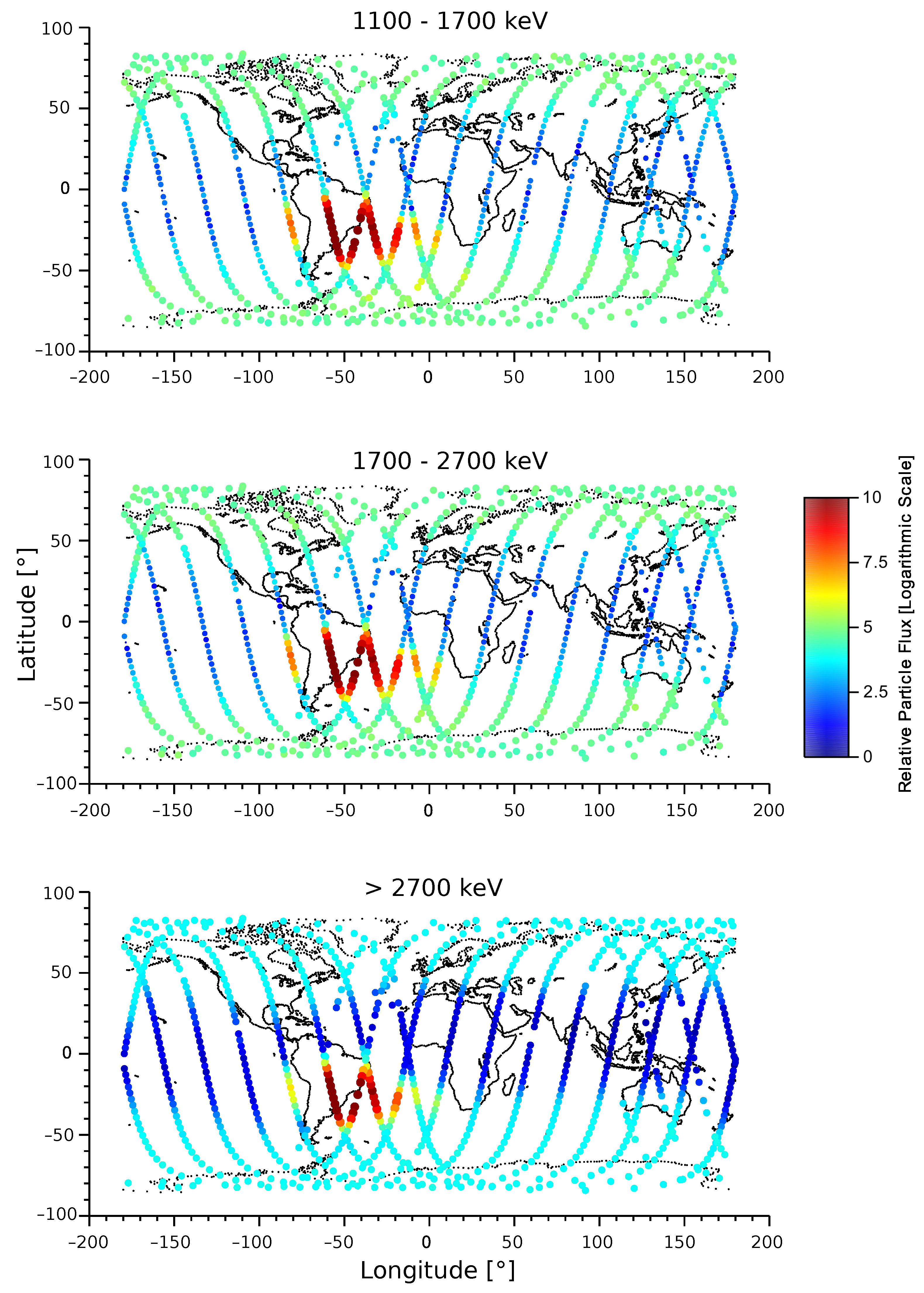
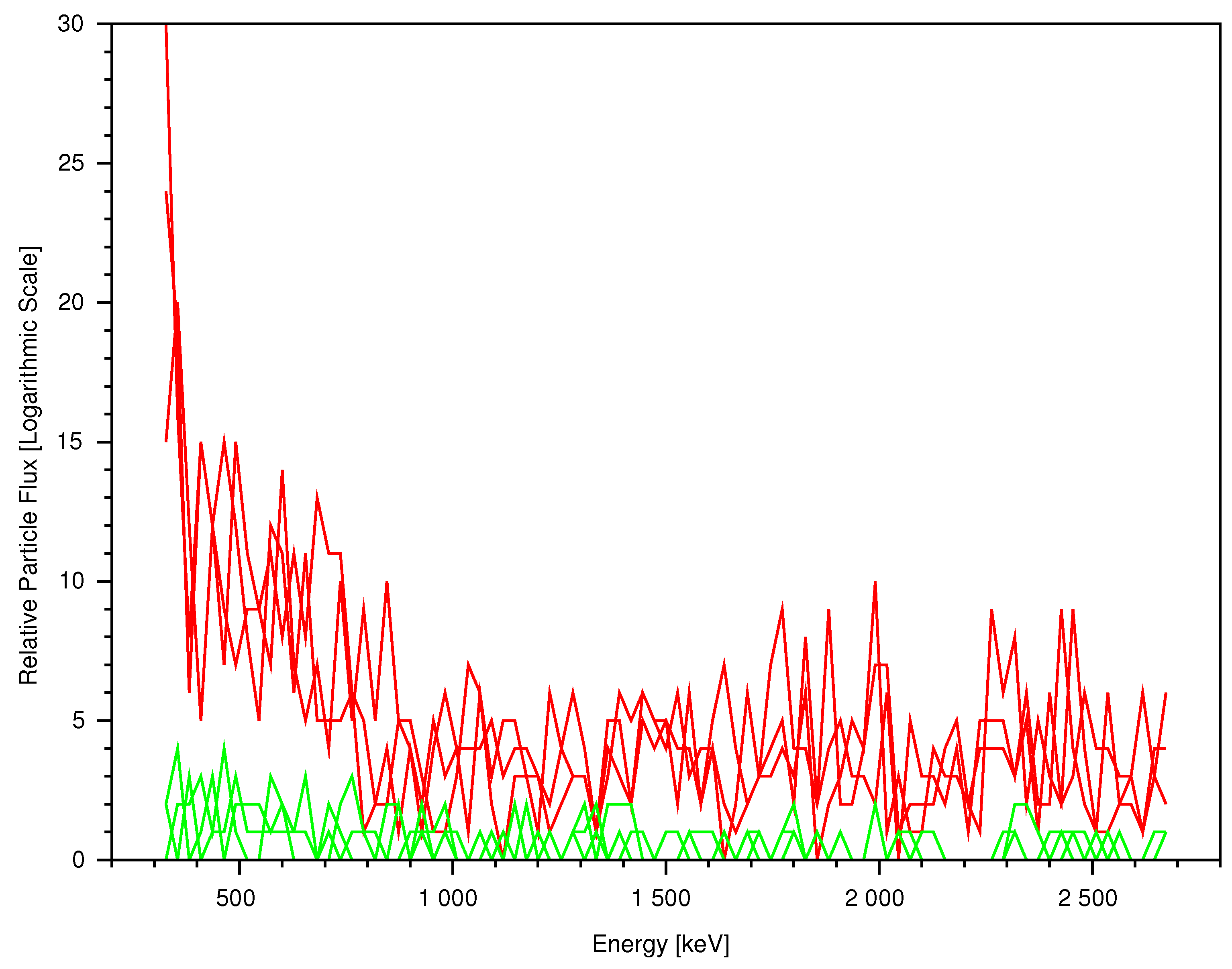
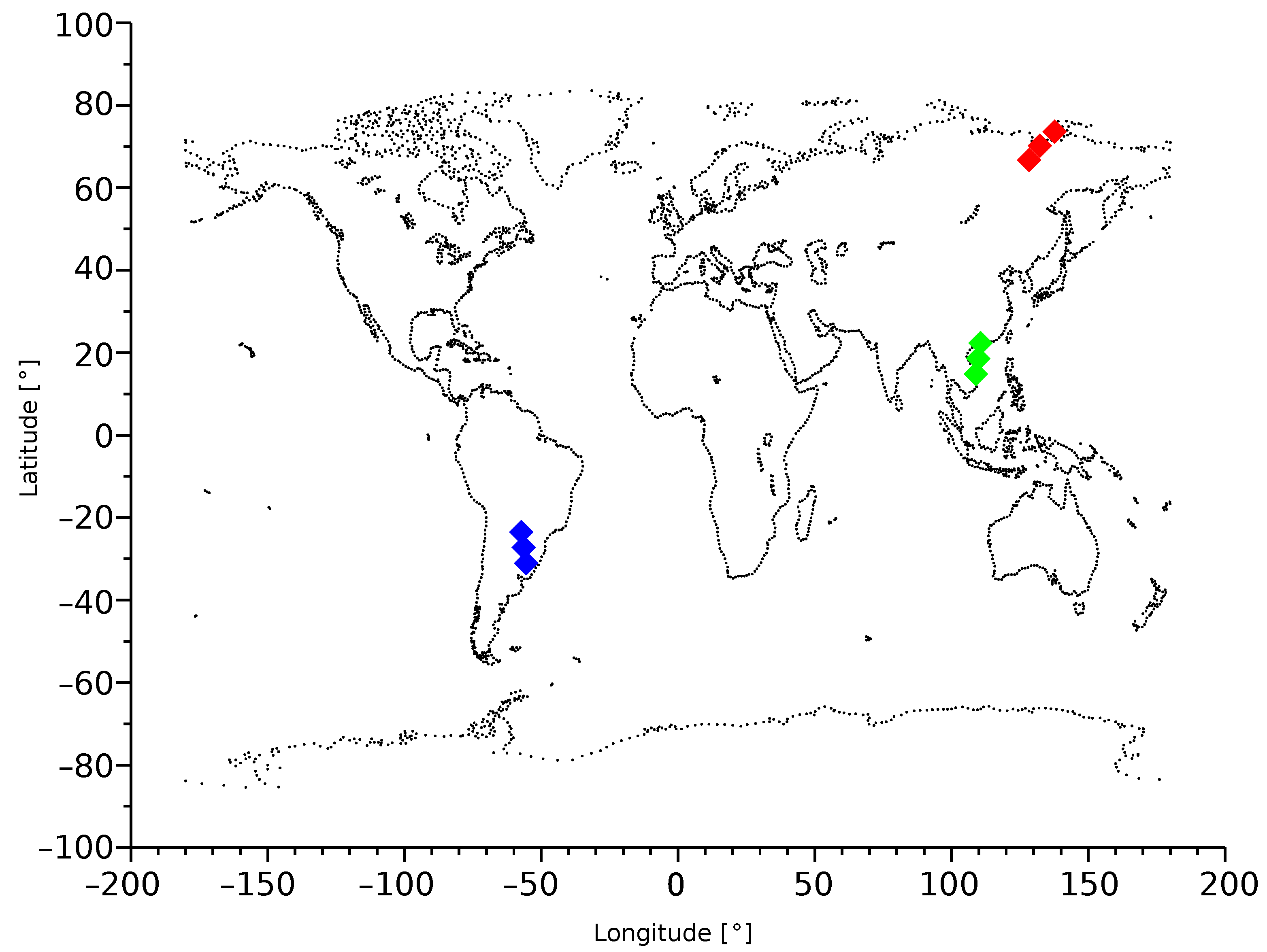
Publisher’s Note: MDPI stays neutral with regard to jurisdictional claims in published maps and institutional affiliations. |
© 2022 by the authors. Licensee MDPI, Basel, Switzerland. This article is an open access article distributed under the terms and conditions of the Creative Commons Attribution (CC BY) license (https://creativecommons.org/licenses/by/4.0/).
Share and Cite
Kovář, P.; Puričer, P.; Benton, E.; Mikeš, J. Demonstration of the Capability of 1U CubeSat for Measurement of the Energy Spectrum on LEO. Electronics 2022, 11, 3390. https://doi.org/10.3390/electronics11203390
Kovář P, Puričer P, Benton E, Mikeš J. Demonstration of the Capability of 1U CubeSat for Measurement of the Energy Spectrum on LEO. Electronics. 2022; 11(20):3390. https://doi.org/10.3390/electronics11203390
Chicago/Turabian StyleKovář, Pavel, Pavel Puričer, Eric Benton, and Jan Mikeš. 2022. "Demonstration of the Capability of 1U CubeSat for Measurement of the Energy Spectrum on LEO" Electronics 11, no. 20: 3390. https://doi.org/10.3390/electronics11203390




